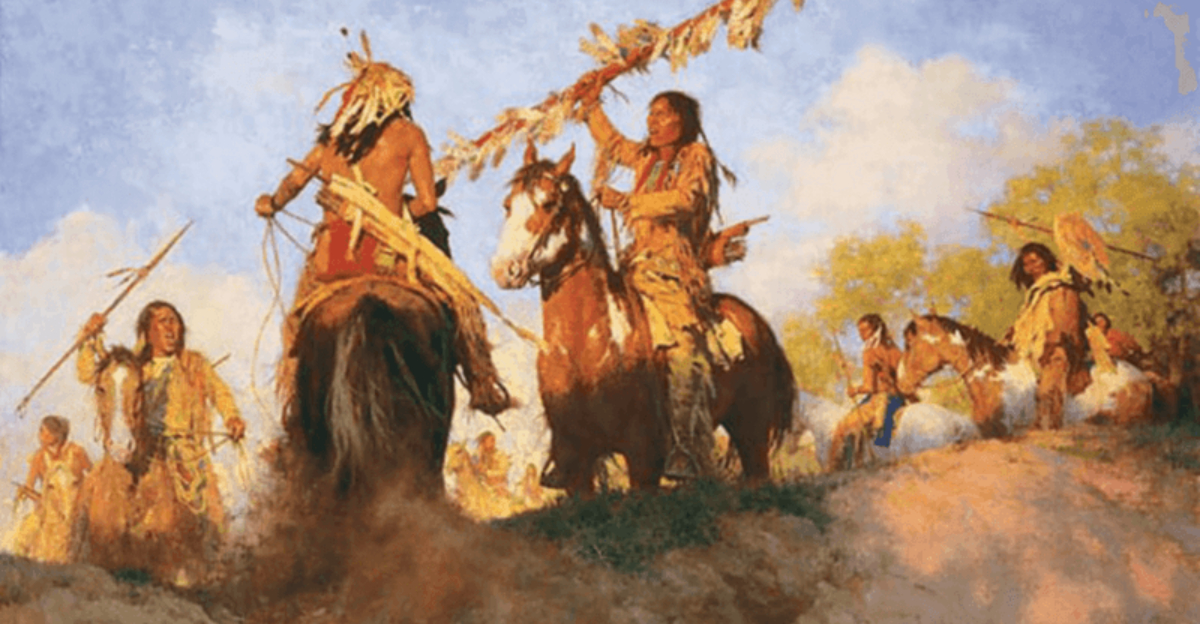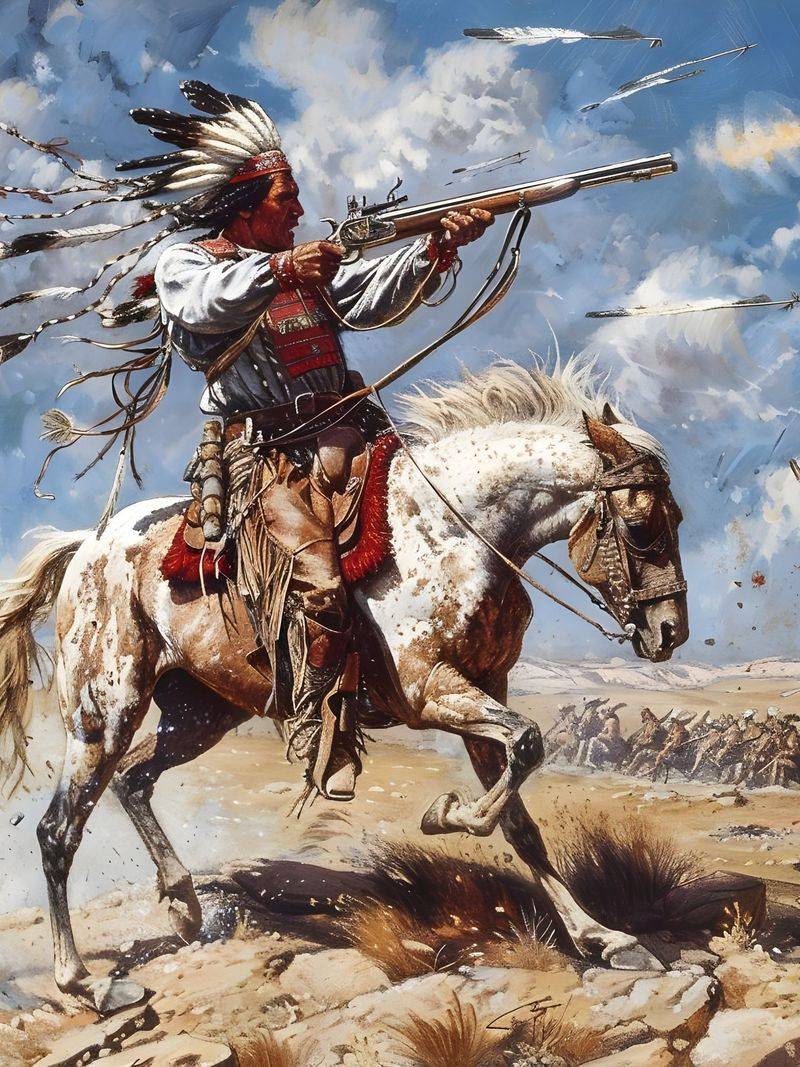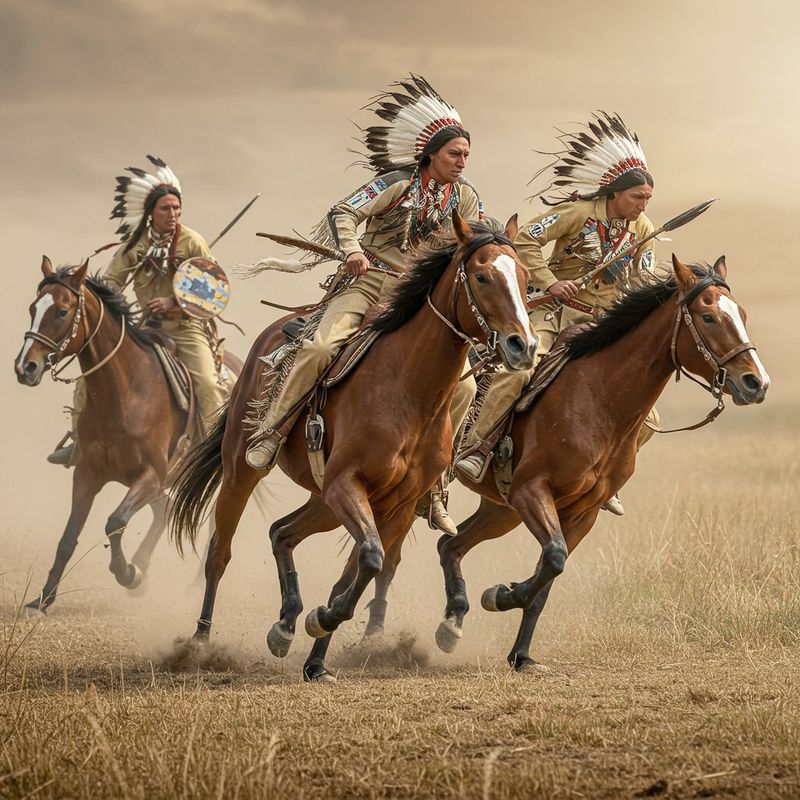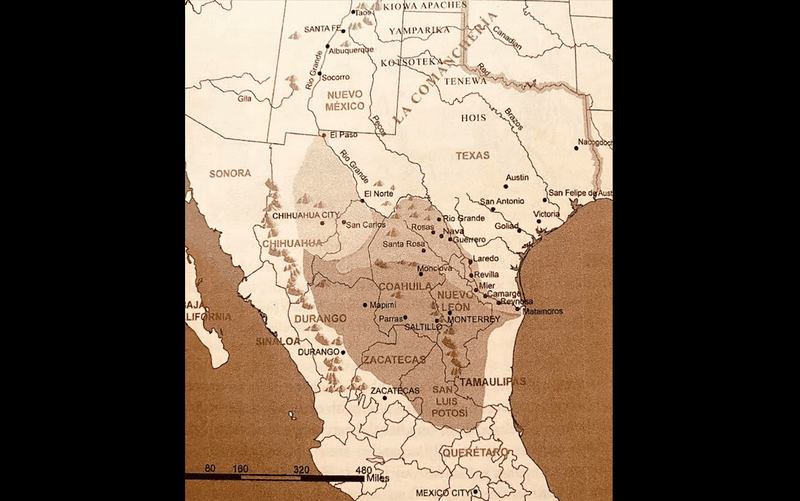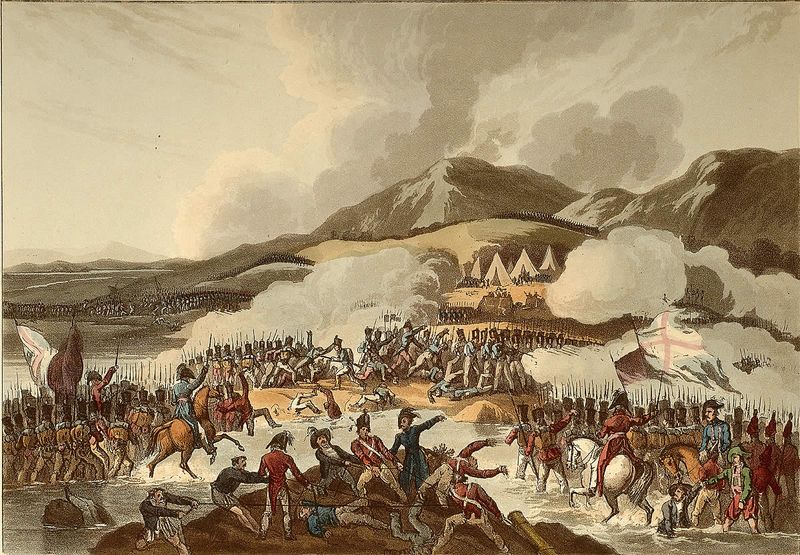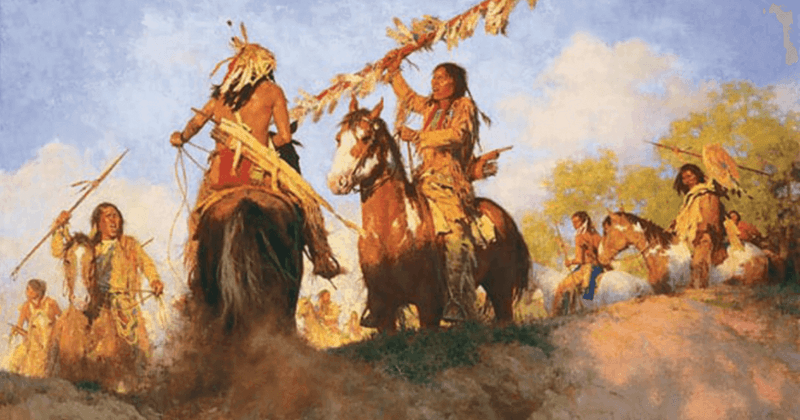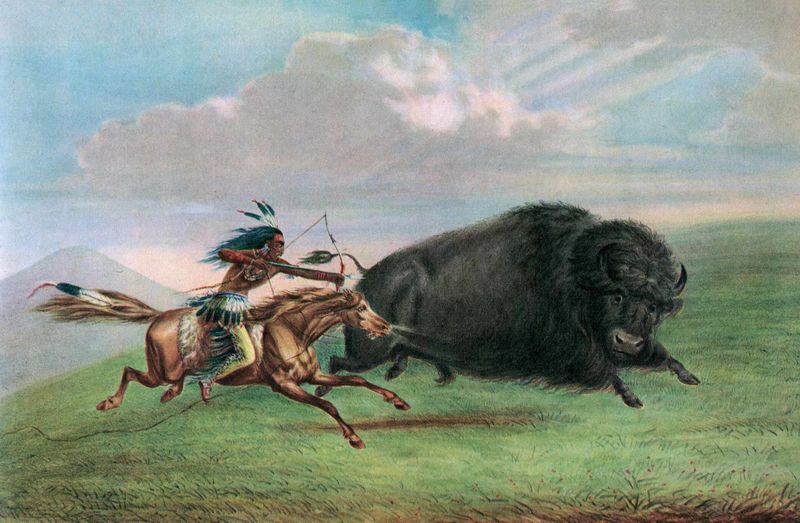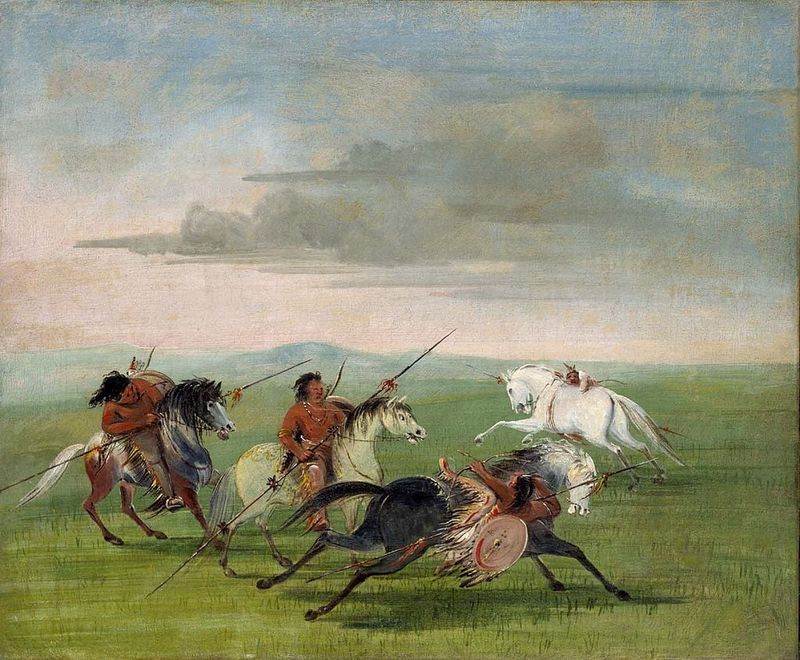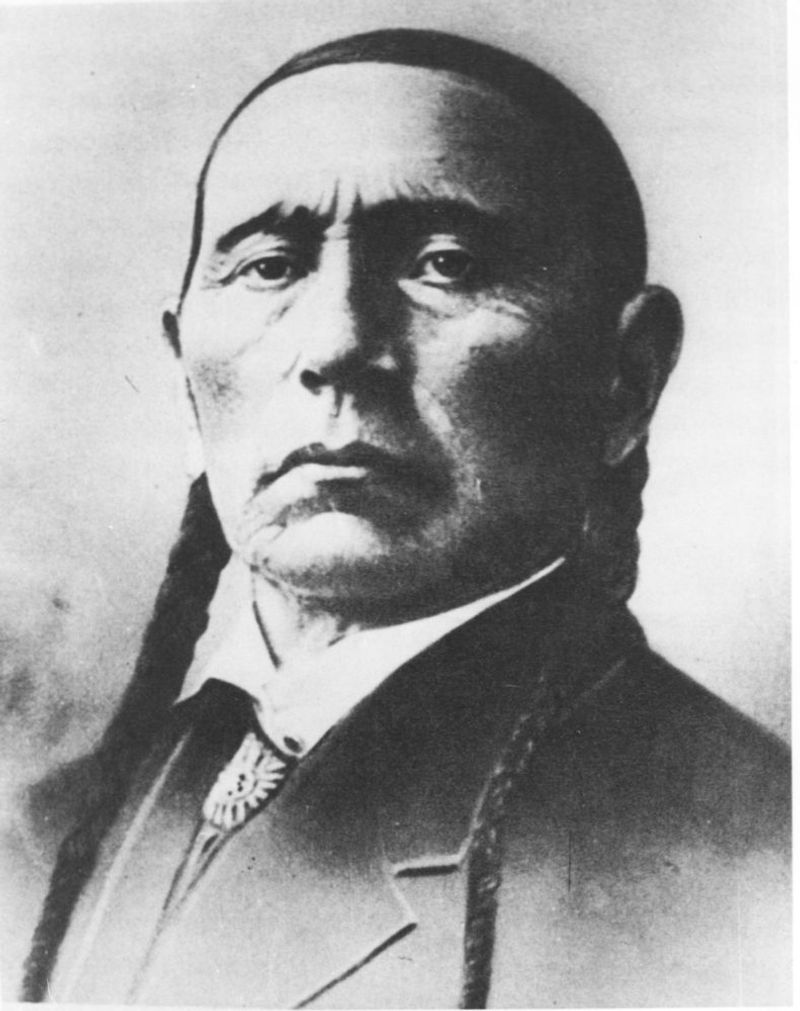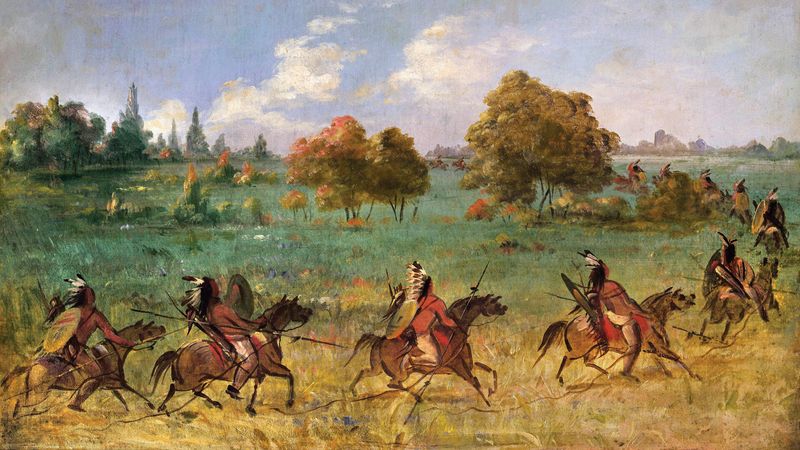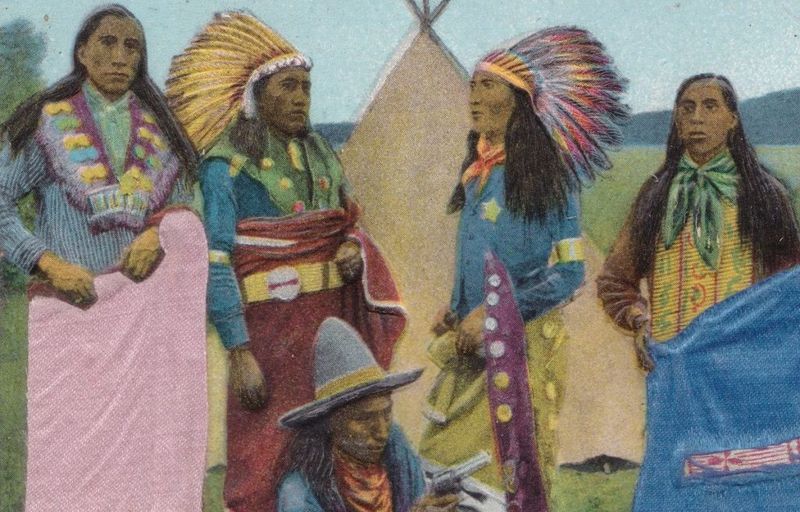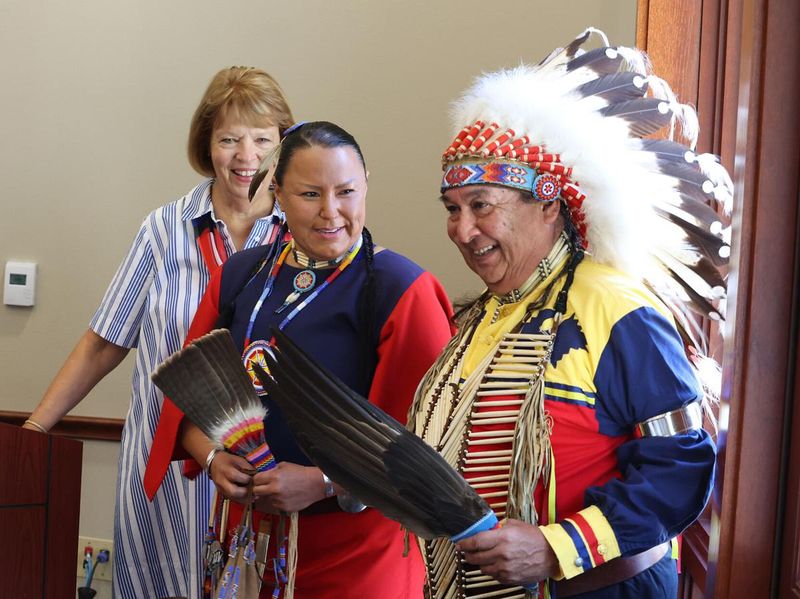Long before European settlers arrived, North America was home to powerful indigenous nations with rich cultures and military prowess. Among these, one tribe stood above others in their fighting ability, territorial dominance, and lasting impact. The Comanche tribe emerged as perhaps the most formidable Native American force, controlling vast territories and successfully resisting outside powers for generations.
1. Military & Warfare Dominance
Fearsome warriors who struck terror across the Southern Plains, the Comanche transformed warfare with revolutionary tactics. Their lightning raids could appear without warning, leaving devastation in their wake.
Children began training as warriors from age six, learning to shoot arrows while hanging from a galloping horse’s side. By adulthood, a Comanche warrior could release 20 arrows in the time it took a soldier to reload a single-shot rifle.
Their battle prowess eventually halted the northward expansion of Spanish colonization, something no other tribe accomplished single-handedly.
2. Masters of Horseback Combat
Revolutionary horsemen who forever changed Plains warfare, Comanche riders could ride at full gallop while completely hidden behind their mount’s body. Only an arm and leg remained visible as they fired arrows from beneath the horse’s neck.
Spanish conquistadors inadvertently created their own worst nightmare by introducing horses to North America. The Comanche mastered horsemanship so thoroughly that by the 1700s, they maintained herds numbering in the thousands.
Horseback skills weren’t just for warfare—young boys practiced by riding alongside buffalo calves, grabbing their tails to develop balance and coordination.
3. Raiding Empire
Stretching across five modern states, Comanchería wasn’t just territory—it was an empire built on military might and economic control. At its height, this domain encompassed roughly 240,000 square miles, an area larger than France.
The name “Comanche” comes from the Ute word “Komántcia” meaning “anyone who wants to fight me all the time.” This reputation was well-earned through centuries of dominance.
Within their empire, Comanche bands controlled vital trade routes connecting Spanish Mexico with French Louisiana and later American territories. They regulated who could pass through and collected “taxes” in the form of tribute from travelers.
4. Resisted European Powers
Spanish conquistadors who easily conquered the Aztec Empire met their match in Comanche territory. When Spain attempted to establish missions in Texas, Comanche raids were so devastating that many settlements were completely abandoned.
Mexican authorities once offered payment for Comanche scalps, but quickly abandoned this policy when it only intensified attacks. The Texas Rangers, famous for their toughness, were originally formed specifically to combat Comanche raids.
Even the U.S. Army struggled against them. In 1871, General William Tecumseh Sherman narrowly escaped death during a Comanche raid while traveling through Texas on an inspection tour.
5. “Lords of the Plains”
“The Comanche are the most skilled horsemen on the Plains,” wrote one 19th-century observer, “and might be called the Lords of the Plains.” This nickname captured their unrivaled dominance and the fear they inspired across the frontier.
Their raiding tactics were so effective that settlements throughout Texas and northern Mexico lived in constant dread. Many frontier families slept in clothing to be ready to flee at a moment’s notice if Comanche raiders appeared.
Cynthia Ann Parker’s story exemplifies their practice of taking captives. Kidnapped at age nine, she later became the mother of the last great Comanche war chief, Quanah Parker, who would lead the final resistance against U.S. forces.
6. Controlled the Buffalo Trade
Buffalo formed the backbone of Plains economy, and the Comanche controlled access to the southern herds with iron determination. A single buffalo could provide meat, shelter, clothing, tools, and trade goods—making control of hunting grounds equivalent to controlling the region’s entire economy.
Comanche hunters developed specialized techniques for buffalo hunting. Young men could ride alongside stampeding herds, selecting prime animals and firing arrows with remarkable precision into the exact spot behind the shoulder blade for an instant kill.
Their strategic position allowed them to become middlemen in a vast trading network. They acquired horses and captives from the south, guns from the east, and distributed buffalo products across North America.
7. Alliances & Enslavement
Master diplomats as well as warriors, the Comanche built a complex network of alliances to strengthen their position. Their partnership with the Kiowa tribe created a formidable combined force that dominated the Southern Plains for generations.
Far from the noble savage stereotype, Comanche society included a sophisticated slave economy. Captives taken in raids became valuable commodities who could be ransomed, adopted into the tribe, or traded to other groups.
Spanish colonial records document repeated attempts to negotiate peace with Comanche leaders. These diplomatic missions often involved elaborate gift exchanges and ceremonies, demonstrating the respect even European powers showed toward Comanche political influence.
8. No Central Government, Yet Highly Organized
Unlike hierarchical European societies, the Comanche operated through a decentralized system of autonomous bands. Leadership wasn’t hereditary but earned through demonstrated skill in warfare, hunting, and spiritual matters.
This flexible structure proved remarkably resilient against outside threats. When U.S. forces attacked one band, others remained untouched, making complete defeat nearly impossible for decades.
Quanah Parker represented the evolution of Comanche leadership. Born to a white captive mother and a Comanche chief, he united disparate bands in the final resistance against U.S. expansion and later became an effective negotiator between cultures after surrender.
9. Last Tribe to Surrender to the U.S.
While other tribes succumbed to U.S. military pressure decades earlier, the Comanche continued effective resistance until 1875. Their final surrender came only after a brutal winter campaign targeting their horse herds and food supplies—not through direct military defeat.
The Red River War of 1874-1875 marked this final chapter. U.S. forces under General Philip Sheridan employed the same scorched-earth tactics used against the Confederacy during the Civil War.
Quanah Parker led the last free band of Comanches, finally surrendering at Fort Sill, Oklahoma in June 1875. His decision saved his people from starvation after their buffalo herds were deliberately exterminated by commercial hunters.
10. Adapted to Change
Originally woodland people related to the Shoshone, the Comanche underwent a remarkable transformation after acquiring horses. Within a generation, they reinvented themselves completely, developing an entirely new culture centered around mounted warfare and buffalo hunting.
Their language reflects this adaptability. The Comanche developed specialized vocabulary for horses unknown to their Shoshone relatives, including terms describing over 100 different coat patterns.
This capacity for innovation extended beyond warfare. When smallpox threatened their population, Comanche medicine people developed an early form of inoculation, deliberately exposing young people to mild cases to build immunity—a practice they developed independently from similar techniques in Asia and Europe.
11. Still Influential Today
The modern Comanche Nation headquarters stands in Lawton, Oklahoma, where approximately 17,000 enrolled tribal members continue their ancestors’ legacy. The tribe operates its own college, museum, and language preservation program to ensure cultural continuity.
Hollywood has frequently portrayed the Comanche in film, with recent productions like the Prey (2022) working directly with tribal consultants for authentic representation. The nation’s influence extends into modern military culture too—the U.S. Army named its helicopter the “Comanche” in recognition of the tribe’s warrior tradition.
Contemporary Comanche artists, writers, and academics continue shaping American culture, ensuring their perspective remains vital in understanding both history and present-day indigenous issues.
